
We live in a post-production world, but sometimes we can't afford the prices attached to those little "pro" logos. And I get it – editing software isn't something you want to skimp out on. This is especially true for Adobe After Effects. After Effects helps you breathe life into your creative vision by implementing stunning visual effects into your videos and films. To do this, it relies on extensive hardware resources as well as powerful computational power and memory management capabilities. If that sounds confusing – let's just say the more money you throw at Adobe After Effects, the better. But would you spend so much money if you could go down a notch? I hope my extensive research will be of use to you!
Let's begin with breaking down the specifics of this tool so we have all the components we need for a truly unbiased laptop comparison. Let's learn about…
Processor (CPU)
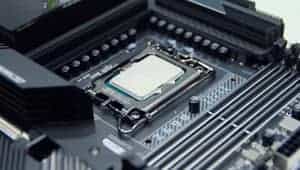
If you're looking to buy a new laptop to use with Adobe After Effects, you'll need to pay close attention to the processor. After Effects is a CPU-intensive application, so you'll need a fast processor to get the best performance. However, it's not the only thing that matters. In this section, we'll take a look at the different factors to consider when choosing a processor for After Effects, and give you our recommendations for the best CPUs for After Effects grouped by price range.
The state of the market
As of late 2022, there are two main types of processors available for laptops – Intel's 13th generation processors and Apple's M1 chips. Intel's 13th generation processors are the latest and greatest from Intel, and offer the best performance. However, they are also the most expensive. Apple's M1 chips are based on Arm architecture and offer great performance and battery life. They are also much cheaper than Intel's 13th generation processors.
CPU vs. GPU (CUDA, OpenCL) for After Effects
When it comes to choosing a processor for After Effects, you have two options – a CPU or a GPU. A CPU (Central Processing Unit) is the traditional choice for After Effects, and offers the best performance. However, a GPU (Graphics Processing Unit) can also be used for After Effects, and offers some benefits over a CPU.
A GPU can be used for certain tasks in After Effects that are CPU-intensive, such as ray tracing. A GPU can also be used for certain effects that are not possible with a CPU, such as 3D rendering. However, a GPU is not necessary for most tasks in After Effects, and will not offer a significant performance boost over a CPU.
Multiple cores and multithreading in After Effects
When it comes to choosing a processor for After Effects, you should pay attention to the number of cores and the type of multithreading. After Effects is a multithreaded application, which means it can take advantage of multiple cores. The more cores a processor has, the better it will perform in After Effects.
However, not all multithreading is created equal. Intel's Hyper-Threading technology offers the best performance in After Effects, followed by AMD's Simultaneous Multi-Threading. If you're looking for the best possible performance in After Effects, you should look for a processor with Intel's Hyper-Threading technology.
A look at laptop processors – what to expect and what to avoid
When it comes to choosing a processor for your laptop, you have two main options – an Intel processor or an AMD processor. Both companies offer excellent processors for laptops, but there are some differences to keep in mind.
Intel's 13th generation processors are the latest and greatest from Intel, and offer the best performance. However, they are also the most expensive. AMD's Ryzen processors offer great performance and value for money. They are also much cheaper than Intel's 13th generation processors.
If you're looking for the best possible performance in After Effects, you should look for an Intel Core i7 or i9 H-series processor. If you're on a budget, you should look for an AMD Ryzen 5 or 7 processor. These processors offer the best performance per dollar ratio while still providing enough power to keep up with the latest features in After Effects.
Graphics (GPU)
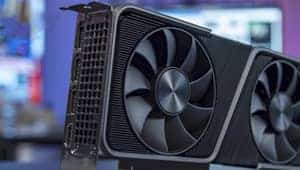
It's late 2022 and you're in the market for a new laptop. You're a heavy Adobe After Effects user and you want to make sure you get a machine that can handle your workload. But with all the different types of graphics processors (GPUs) out there, it can be tough to know which one is right for you.
Here's a quick rundown of what you need to know about graphics cards for Adobe After Effects:
- A dedicated GPU is not required for After Effects, but it will offer a noticeable performance boost.
- After Effects is a demanding application, and it's not uncommon to see Adobe Premiere Pro or even Premiere Pro being used in conjunction with After Effects for video editing and color grading.
- There are many different types of GPUs. While some are better suited for gaming, others are more adept at handling complex visual effects in creative applications such as Adobe After Effects.
- I use 3DMark to compare different graphics cards since it's an industry-standard benchmark that can be found online for most popular graphics cards.
- If you're looking for a laptop with a long battery life, look for one with Nvidia Optimus or AMD Dynamic Switchable Graphics (DSG). These technologies allow the laptop to switch between the dedicated and integrated graphics card based on power requirements and performance demands – this results in longer battery life without sacrificing too much in terms of performance.
So what does this all mean for you? Here are some recommendations for what kind of GPU you should look for in a laptop, based on your budget:
- Minimum: 2 GB of GPU VRAM. You can find laptops with this amount of VRAM.
- Recommended: 4GB or more of GPU VRAM recommended. Laptops with 4GB or more of VRAM
Memory
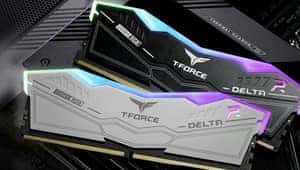
Adobe After Effects is a demanding application that uses a lot of RAM. In fact, a single project can easily use up to 16 GB of RAM. This means that you need a laptop with a lot of RAM if you want to use After Effects effectively.
The good news is that most mid-range laptops come with 16 GB of RAM these days. This is enough to run After Effects without any issues. However, if you're looking for a laptop with a lot of RAM, it's best to get one with DDR5 memory. While it's not crucial, it will improve performance marginally.
In terms of choosing between DDR5 vs DDR4 – there's no reason to choose DDR5 unless you're working with 8K footage or using multiple GPU rendering (in which case – yes, get DDR5).
Other considerations include frequency, ECC, and CL/RL. However, these are not as important as the amount of RAM when it comes to After Effects.
So how much memory is enough for After Effects? The minimum amount of RAM you need is 16 GB. However, we recommend 32 GB for best results. For high-end laptops, you can get up to 64 GB of RAM.
Answering Your After Effects Laptop Questions
Q: What are the recommended laptop specs for Adobe After Effects?
Adobe After Effects is a demanding software that requires a powerful laptop to run smoothly. For optimal performance, we recommend the following specifications:
- Memory: 32 GB or more
- Processor: 8-Core or above for Multi-Frame Rendering
- Graphics: 4GB or more of GPU VRAM recommended
These specifications will ensure that you can work with complex projects, render videos quickly, and have a smooth editing experience.
Which laptops are best for Adobe After Effects?
The best laptops for Adobe After Effects will depend on your budget and specific needs. Here are some recommendations:
-
HP Victus 15 – $710
-
MSI Summit E13 – $140
-
ASUS ROG Strix Scar – $2,310
-
Lenovo Legion Pro 7i 16 – $3,390
-
Dell XPS 17 9720 – $5,600
These laptops offer a range of performance levels and prices, allowing you to choose the one that suits your budget and requirements.
Can I use Adobe After Effects on a laptop?
Yes, you can definitely use Adobe After Effects on a laptop. However, due to the resource-intensive nature of the software, it is important to have a laptop with sufficient specifications to ensure a smooth experience. Make sure your laptop meets or exceeds the minimum requirements for Adobe After Effects.
How much RAM do I need for Adobe After Effects on a laptop?
The amount of RAM you need for Adobe After Effects on a laptop depends on the complexity of your projects. We recommend a minimum of 16 GB of RAM for basic usage. However, for smoother performance and handling larger projects, it is best to have 32 GB or more of RAM. Having more RAM allows After Effects to cache frames and data, resulting in faster rendering and less lag.
Is a dedicated GPU necessary for Adobe After Effects on a laptop?
While Adobe After Effects can run on integrated graphics, having a dedicated GPU will greatly improve performance, especially when working with complex projects or using GPU-accelerated effects. We recommend a laptop with at least 4GB or more of GPU VRAM for optimal performance in After Effects.
What processor is best for Adobe After Effects on a laptop?
For Adobe After Effects, a powerful processor is crucial for smooth editing and rendering. We recommend an 8-Core or above processor for Multi-Frame Rendering. This will ensure that After Effects can take advantage of multiple cores, resulting in faster previews and render times.
What laptops can handle Adobe After Effects smoothly?
Laptops with the recommended specifications mentioned earlier, such as the MSI Summit E13 and ASUS ROG Strix Scar, can handle Adobe After Effects smoothly. These laptops offer a good balance of performance and price, making them suitable for most After Effects users. However, for the best experience, you can consider higher-end models like the Lenovo Legion Pro 7i 16 or Dell XPS 17 9720, which offer even more power and performance.
Can a gaming laptop handle Adobe After Effects?
Yes, gaming laptops are generally well-equipped to handle Adobe After Effects. Many gaming laptops feature powerful processors, ample RAM, and dedicated GPUs, which are all important for smooth After Effects performance. Just make sure to check the recommended specifications and choose a gaming laptop that meets or exceeds those requirements.
Is SSD storage important for Adobe After Effects on a laptop?
SSD storage is highly recommended for Adobe After Effects on a laptop. An SSD (Solid State Drive) provides much faster read and write speeds compared to traditional HDDs (Hard Disk Drives). This means that your projects, media files, and software will load faster, resulting in a smoother editing experience. It also improves the overall responsiveness of the laptop.
What is the minimum laptop requirement for Adobe After Effects?
The minimum laptop requirements for Adobe After Effects are as follows:
- Memory: 16 GB
- Processor: Intel or AMD Quad-Core Processor
- Graphics: 2 GB of GPU VRAM
While you can run After Effects with these specifications, keep in mind that you may experience slower performance when working with complex projects or using effects that require more processing power. If possible, we recommend meeting the medium or maximum specifications for a better experience.
5 Best Laptops for Adobe After Effects
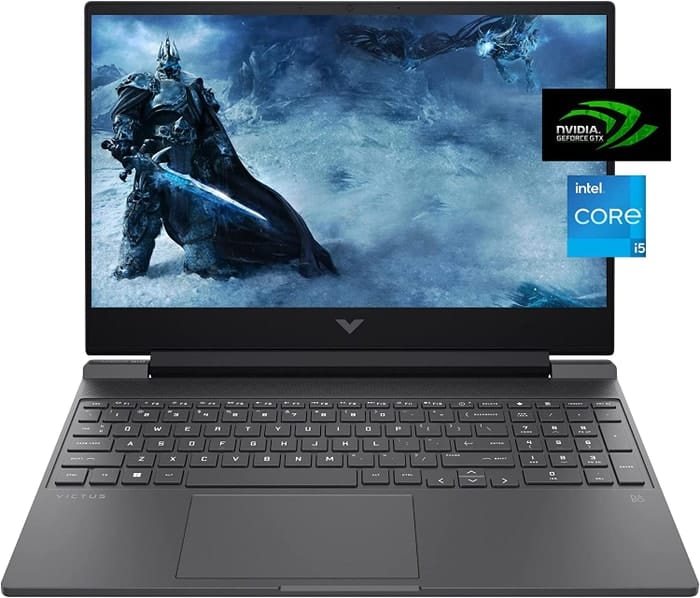
1.HP Victus 15
HP Victus 15: Affordable gaming laptop with trade-offs.- Strong entry-level gaming performance
- Solid productivity performance
- Inexpensive for a gaming laptop
- Display and webcam could be better
- Too much pre-installed software
- Single-channel RAM in our review unit
Summary
The HP Victus 15 delivers solid gaming performance at a budget price, making it a good option for entry-level gamers. However, there are some drawbacks like a subpar display and webcam, excessive pre-installed software, and single-channel RAM.
Alternatives
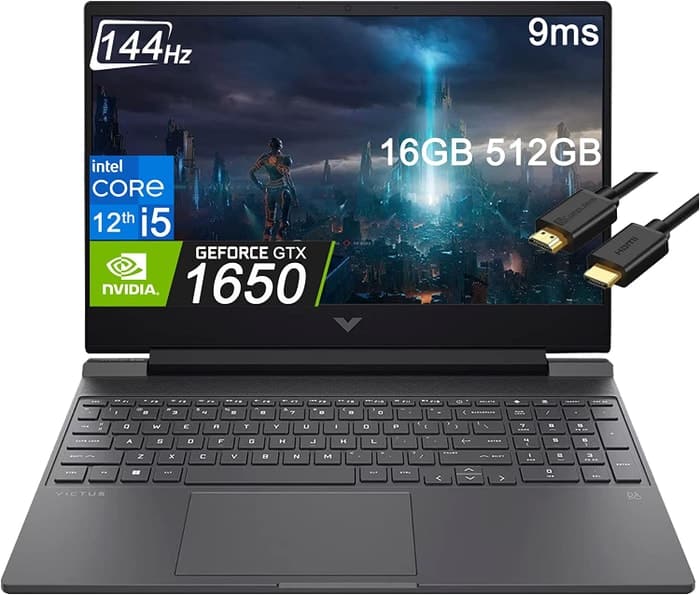
HP Victus 15t
- Low price
- Strong entry-level gaming performance
- Weak GPU yields unsatisfactory frame rates
- Average display and webcam quality

2.ASUS TUF Dash F15
ASUS TUF Dash F15: A balanced performer and competitively priced laptop for all-purpose/gaming needs.- Lightweight and well built
- Good inputs and IO
- Good FHD 300Hz and QHD screen options
- More powerful than previous generation
- Quirks affecting everyday ergonomics
- Most ports squeezed together on the left edge
- Be careful with the FHD 144Hz panel option
Summary
The ASUS TUF Dash F15 is a lightweight and well-built laptop that offers good inputs and a range of screen options. It's significantly more powerful than its previous generation and offers fair battery runtimes. Just be mindful of the FHD 144Hz screen option.
Reviews
Alternatives

Lenovo Legion 5i Pro 16
- Stylish, sleek form factor
- Gorgeous display
- Webcam quality is poor
- No biometrics
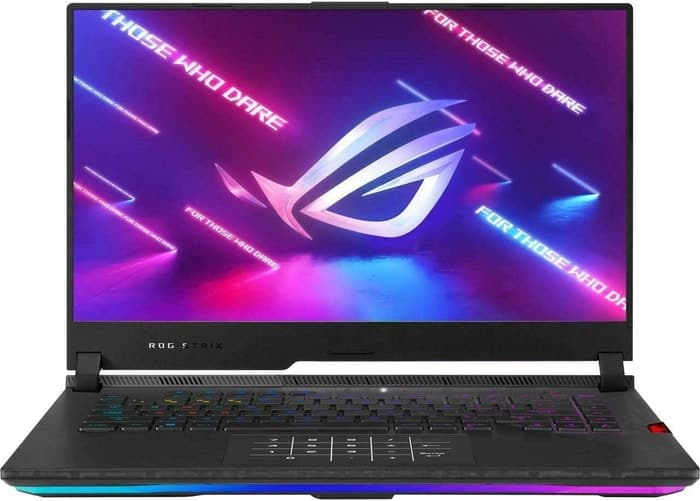
3.ASUS ROG Strix Scar
ASUS ROG Strix Scar: A Powerful Laptop with Some Drawbacks- Sturdy construction
- Fast Wi-Fi 6E
- Excellent response times and no PWM
- Wide color gamut coverage with Dolby Vision support
- Limited display angle
- No biometric login
- Heavy SSD throttling
Summary
The ASUS ROG Strix Scar 15 G533 offers impressive performance with its Intel Alder Lake Core i9-12900H and Nvidia RTX 3070 Ti. It features a sturdy construction, fast Wi-Fi 6E, excellent response times, and wide color gamut coverage. However, it has limited display angle, no biometric login, SSD throttling during continuous reads, high heat and noise emissions under load, and a subpar battery backup.
Reviews
Alternatives
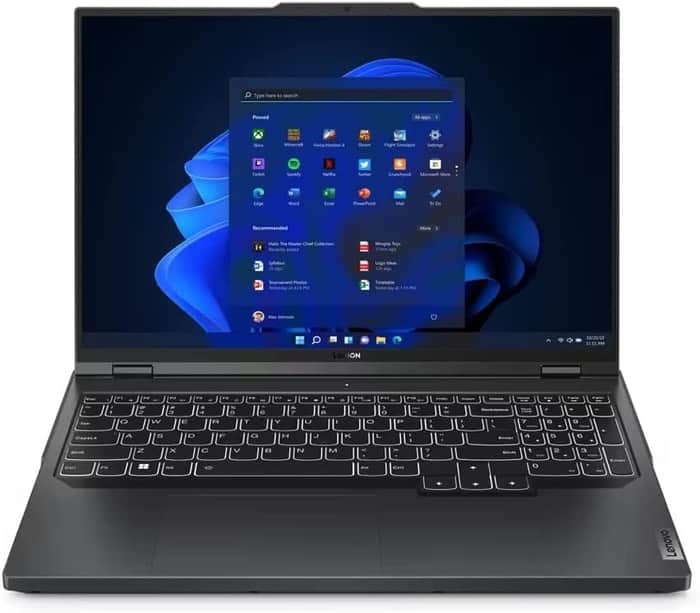
Lenovo Legion Pro 5
- Fantastic value
- Top-tier gaming performance
- Middling screen
- A bit heavy

4.Lenovo Legion Pro 7i 16
Lenovo Legion Pro 7i 16: A mid-priced powerhouse for Adobe After Effects.- Strong overall performance
- Big, bright, and fast display
- Per-key RGB lighting
- Some flex to the keyboard deck
- Poor battery life
Summary
The Lenovo Legion Pro 7i Gen 8 is a powerful laptop equipped with a 13th-gen Core i9 CPU and RTX 4090 graphics, making it a great choice for running Adobe After Effects. With strong overall performance, a big and bright display, and per-key RGB lighting, it offers an excellent user experience. However, it does have some keyboard deck flex and poor battery life.
Alternatives

HP Omen 17
- QHD display with 165 Hz
- Expandable working memory
- Slightly below-average performance for a RTX 4080
- High noise level
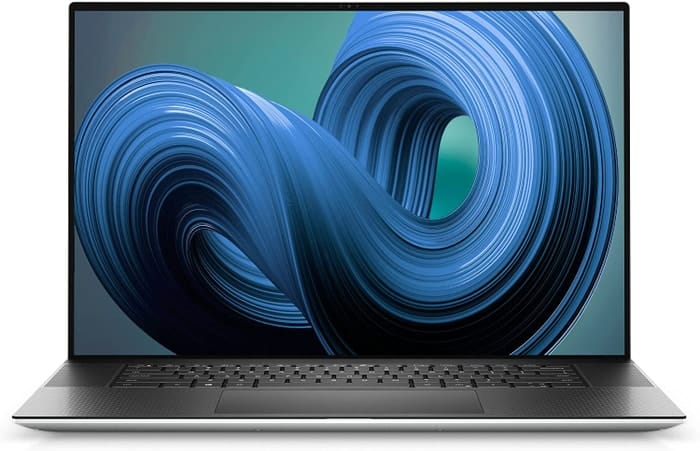
5.Dell XPS 17 9720
Dell XPS 17 9720 with excellent 4K display and high system performance, but weaker graphics performance and cooling.- Excellent 4K display with AdobeRGB
- High-quality case
- Thunderbolt 4 PCIe 4.0
- Very high system performance
- Lower graphics performance than the predecessor
- Performance not completely stable under combined load
- Not Wi-Fi 6E compatible
- 720p webcam
Summary
The Dell XPS 17 9720 offers an excellent 4K display with AdobeRGB and high system performance. However, it falls short in graphics performance compared to its predecessor and the cooling is slightly weak. Overall, it's a solid option for Adobe After Effects, but an update is needed.
Reviews
Alternatives
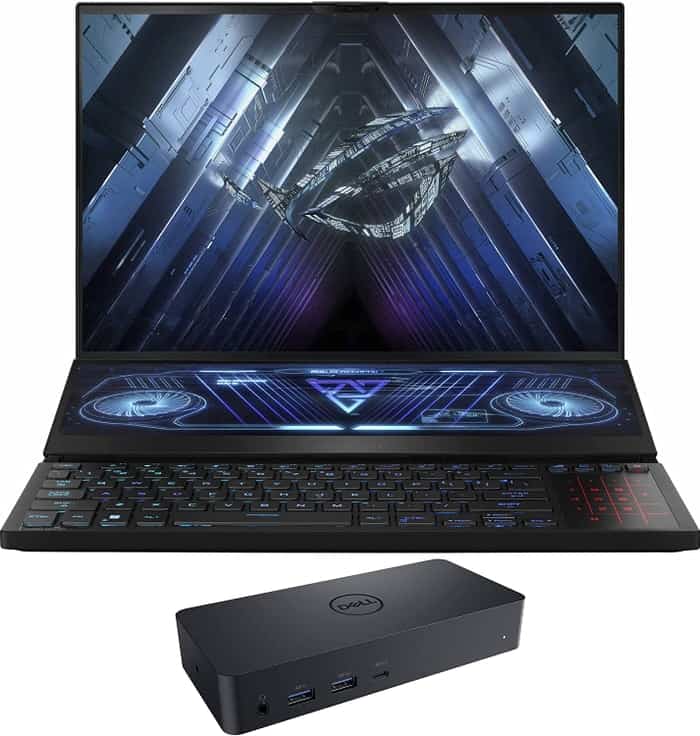
ASUS ROG Zephyrus Duo
- Impressively thin, elegant design considering dual displays and sheer power
- Refined two-screen layout
- Eye-watering cost, especially as configured
- Awkward keyboard and touchpad layout
Table of the Best Laptops for Adobe After Effects
| Laptop | Price (approx) |
| HP Victus 15 | $710 |
| ASUS TUF Dash F15 | $1,160 |
| ASUS ROG Strix Scar | $2,050 |
| Lenovo Legion Pro 7i 16 | $3,390 |
| Dell XPS 17 9720 | $5,600 |





